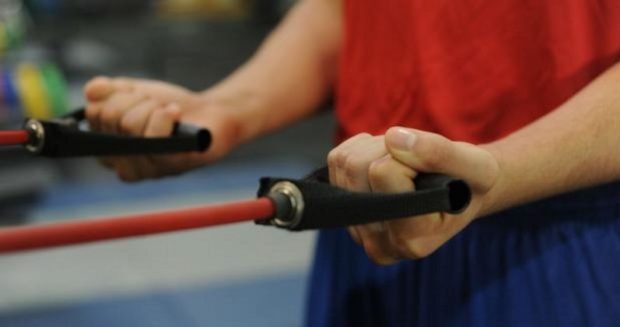Bell bottoms, disco and eight-tracks. The 1970s were an interesting time not only for America but in athletic training as well.
There’s no doubt players are bigger and stronger today than they were 40 years ago – just look at this chart of NFL draftee player weights by position via Pro Football Reference. The athletes are not only stronger today but strategically stronger than they were back then.
As football players looked to get bigger in the 1970s, strength training programs borrowed the strategies used in body building, Olympic lifting and track and field. Initially, the idea was to get big and strong with less of a focus on flexibility and what a player actually does during a game.
Link to original article in USA Football.
Since then, trainers started focusing on movements and skills specific to the sport. In football, where you’re not always standing with two feet on the floor, the way you train had to change. Football strength training has gotten more integrated – pulling elements from physical therapy, sports psychology and multiple performance areas.
At St.Vincent Sports Performance, every warm-up is focused on four skills – mobility, stability, flexibility and pliability. Football isn’t a linear sport, so players don’t just need to be strong in a straight line but be able to move that power across different planes and angles. Training should mimic the game as much as possible so it’s important to train muscles in the way they’ll be used on the field.
Here’s five ways our approach to training has changed:
- Work from the inside-out. It’s essential to establish a proper foundation and build a strong core before trying to increase speed, power or strength. Many injuries happen because athletes try to build strength on a weak base. So if you’re looking to build lower body strength, start with lunges and squats before adding external weight or speed and then work your way up.
- The back is key. Most people are dominant on the front side of their bodies and weak on the back side, but in performance training, we say: “you want to look better leaving than you do coming.’ The stronger you are on the back side of your body, the better you’ll be from a performance standpoint. A simple way to think about this in your training is to focus on pulling exercises and not just pushing movements.
- Train how you play. Build strength in ways that are conducive to football and will transfer to the field. In football, you’re on your feet, so opt for lunges and squats instead of sitting down at a leg press machine. Also, aim to train in patterns – including multidirectional lunges or chops and lifts with medicine balls – instead of more simple movements.
- Train your body as a system. Your body is made up of different, integrated systems that work together. Walking, for example, is an integrated movement because it incorporates both leg and arm movements. While training, think of your body as a system and try to integrate different motions. For example, if you’re doing a single-arm overhead press, kneel on the ground with one leg forward and your foot planted on the floor. This simple adjustment will also engage your core and postural muscles while you’re building strength.
- Use strength in all planes of motion at varying degrees. Think about how you can change each movement front to back, side to side, up and down. Squats, for instance, are great, and you can make them even more effective by changing them up. Build a pattern that incorporates a regular squat, a single leg squat, a squat with one foot on a riser, a squat up to a box, and so on.
During the last four decades, training has changed for the better, and we can’t wait to see how it continues to improve over the next forty years.

